
Four beekeepers look after hundreds of thousands of bees on the TU/e campus
“Bees can function perfectly fine in a built environment as long as there’s enough room for them to leave and enter the hive"
Even if you visit campus every day, you still might never have noticed them before: the half million bees that live there. Beekeepers Jan Hasker and Walter de Beijer along with two others spend a great deal of time in the bushes behind Fenix looking after their colonies. “Local honey contains pollen from your own neighborhood, and that can help against hay fever.” But if you want to benefit from the therapeutic effect of honey in your tea, you need to add it after your tea has cooled down to drinking temperature, a fact that many people don’t know.
We have over half a million bees on campus: nine colonies. “A colony is made up of approximately 60,000 bees,” Jan says. “Bees can only live in colonies; they die on their own.” By the way, many people have a wrong idea of what bees look like, Walter says. “They tend to think of a yellow and black animal, like Maya the Bee. But Maya is a wasp! Wasps have yellow and black stripes. Bees are brown and have fuzzy hair.”
You’ll find Jan and Walter and their bees behind Fenix. In case you were thinking of going over there to take a look: the area isn’t open to the public. Only those who are truly interested can contact the beekeepers and make an appointment for a safe visit. Because things can get dangerous if you don’t know what you’re doing. “If you get in their flight path, you’re certainly running a risk,” Jan says. Walter adds: “When you stand between the sun and the bee hive, alarms will go off inside.”
And even if you know what you’re doing, you can still get stung, as both gentlemen can attest from personal experience. Walter got stung once under his eye. “That was quite serious. I was also stung once by a bee that accidentally got trapped inside my glove. My hand got really swollen from that. Since then, I always bring an antihistamine pill with me.” Two things can happen if you get stung regularly: you either become allergic or you get used to it. Jan: “The latter happened to me, the sting site just gets red and a bit itchy.”
Honey against hay fever
The production of honey from bees varies somewhat. One year, both gentlemen have just enough honey for family and friends, whereas the following year they might suddenly have kilos of honey. They don’t actively sell the honey at TU/e, precisely for that reason: they can’t guarantee continuity. People who would like to buy a jar of honey can send an email, and Jan and Walter will see whether they have enough in stock at that moment.
Honey can also help against hay fever, a fact many people don’t know. Jan: “The honey has to come from the area where you live, not from your local supermarket. Local honey contains pollen from your own neighborhood. Those pollen enter your system in a different way and this allows your body to get used to them, so that you won’t react so strongly any more. I know a few colleagues who benefit from it. But it doesn’t help against every type of hay fever, not against grasses and wind pollinators. That’s because bees only go to flowers and certain types of trees.”
Walter has a couple of tips for people who like honey: “Never put honey in tea that’s still too hot, but wait until it cools down to drinking temperature. Honey contains living enzymes that can’t survive overheating. And these enzymes are what gives honey its therapeutic effect.” But honey is no miracle drug. “It can help stop an illness from spreading, but it can’t cure you.”
Crowded by the edge of the swimming pool
You can’t just call yourself a beekeeper without following a training first. “I took my first course in 2010, and I became a member of the TU/e staff association, because the hives on campus belong to the association,” Jan says. “I’ve been working for the department of Mechanical Engineering for 25 years and bee-keeping is something I do next to my work, just like the other beekeepers here on campus.” Walter: “Beekeeping runs in the family, my grandfather also had bees.”
Despite the fact that they’ve been keeping bees for many years, both Walter and Jan continue to be moved by it. “Walter: “A swarm of bees in your backyard is quite an impressive sight. Most people close the door when they see something like that. That hasn’t happened to me so far.” Many people are afraid of bees; there's no reason for that, according to the beekeepers. “Bees are concerned with their own affairs. If you come too close, a guard bee will come and tell you that you’re disrupting the hive. That’s a warning telling you to leave. If you don’t, you’ll get stung. There’s no reason to be afraid, as long as you don’t get in their flight path or ignore their communication.”
“Bees can function perfectly fine in the built environment,” Walter believes. “As long as there’s enough room for them to fly in and out the hive. And it’s better not to have a swimming pool nearby. Bees will drink, and when your neighbor has a swimming pool, it might get crowded at the edge of the pool. Unless there’s a place to drink closer by. You can solve that problem by placing a pond in your own garden, or an alternative water source. And you need to keep the entrance to the hive shielded, so that people won’t walk in front of it. Bees won’t come to you on their own accord.”
Harvesting TU/e honey
A bee hive consists of several parts. Walter: “At the bottom you’ll find the nest box with entrance: a nest with larvae and pupae. That’s where the bees reproduce. On top of that you’ll find the honey container, which isn’t quite as tall as the nest box. This is where the bees store honey, because they look for the deepest safest spot in the hive.”
The beekeepers usually harvest the honey in May, and a second time in July or August. At the time of writing, Jan indicated that he planned to extract honey again soon. “This is done with a honey extractor machine: a kind of horizontal washing machine that people used to have. The honey frames have windows, which you place in the extractor machine. As it starts to spin, the honey flings out and runs down the walls of the extractor. You then turn the honey combs and do the same thing again. The honey that ran down leaves the extractor through two sieves via a valve into a sealable bucket.”
No need to feel sorry
Some people feel sorry for the bees, since the beekeepers take away their honey. Jan and Walter take a different view: “Bees don’t use honey to grow or recover. To them, it’s simply energy to keep them warm, and sugar water works just as well for that. Unlike people, insects don’t use proteins to recover. When they lose a leg, it’s lost for good. We feed the bees sugar water in return for their honey. That’s all the same to them: it contains carbohydrates that give them energy.”
Future of the bees
It is often said that bees are endangered. That is one of the reasons why municipalities urge people to create more pollinator-friendly gardens for bees. Jan and Walter aren’t that worried about the future of all bee species. Jan: “I’m not too worried about honey bees. Beekeeping has become increasingly popular over the years, precisely because of all that commotion. But apart from honey bees, there are almost 300 bee species that might become endangered because there are too many honey bees. When there are more than six colonies per square kilometer, wild bees might get supplanted.” Walter adds: “Then again, it’s relative, because many bees are attracted to their own specific flower. Bumblebees, for example, are wild bees with longer tongues. That’s why they are attracted to other flowers than honey bees are. Ninety five percent of pollinators are wild bees, not honey bees.”
Jan: “I do however worry about the future of wild bees and other insects.” Walter: “We’ve reached a critical point. We’re using more and more concrete in the Netherlands, and that’s of no use to bees. And we have lots of grain crops, but these are wind pollinators instead of nectar flowers. In addition, agricultural chemicals are designed in such a way that they don’t kill insects any longer, but make them disorientated. As a result, animals can’t find their way back to their nests, the queen doesn’t have worker bees anymore, and the food supply dries up. That’s how colonies die. But we do see a lot of good will. There’s an increase in sowing diversity, such as grain fields with flower borders, and plants and flowers along roads.” But Jan and Walter believe that average citizens from Eindhoven can do their part too. “People can help by not using aggressive pesticides to get rid of aphids on plants in their gardens,” Walter says. “And by planting some flowers, obviously, because stone terraces aren’t of any use to bees, unfortunately.”

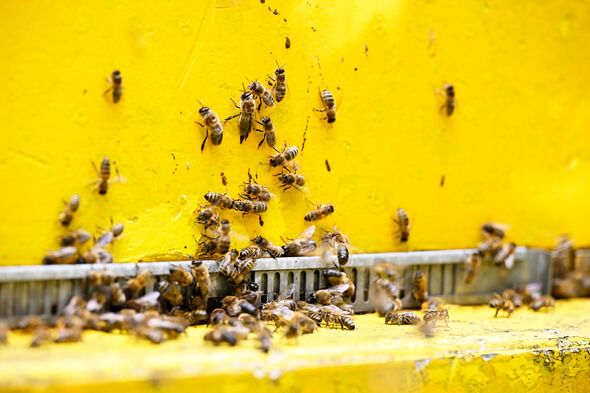
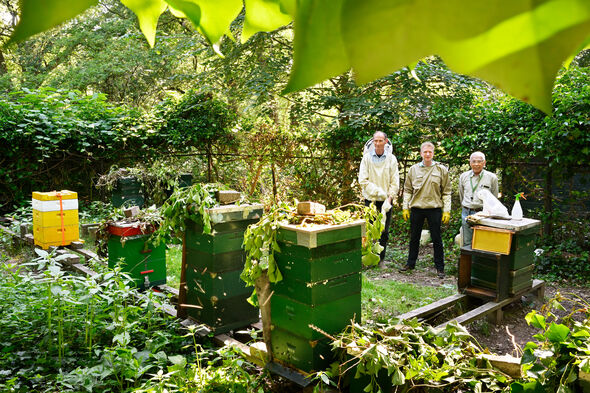
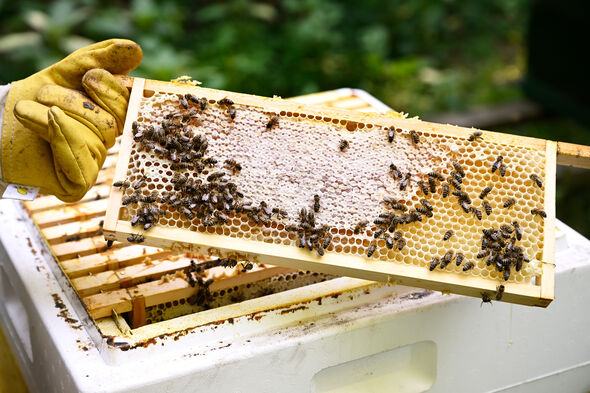
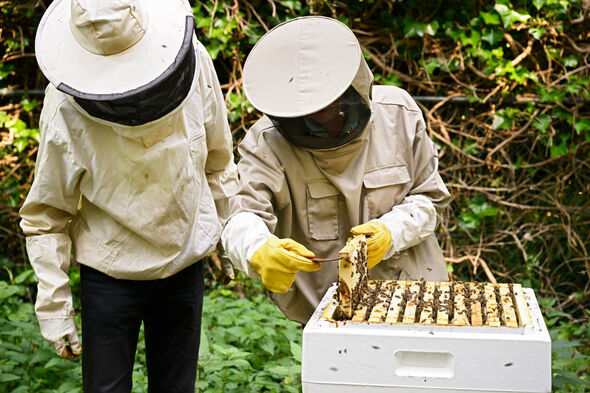
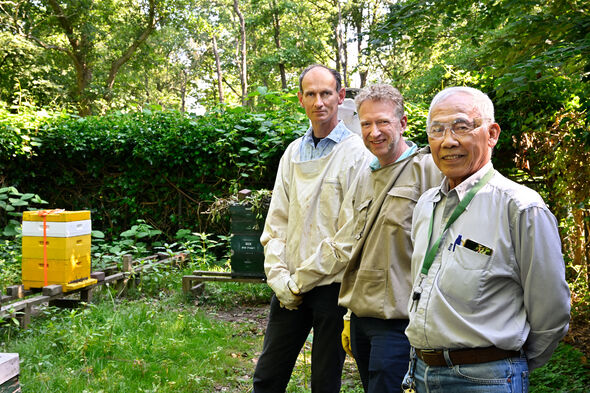
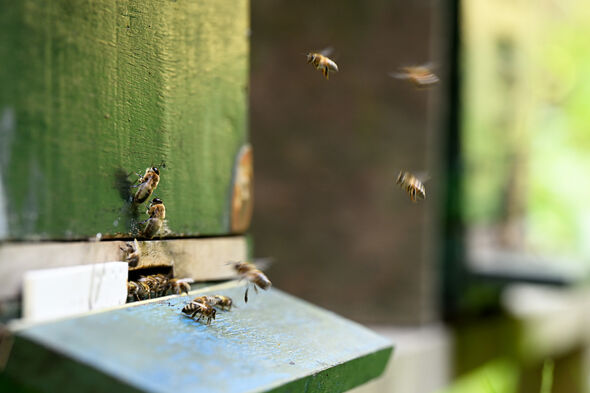
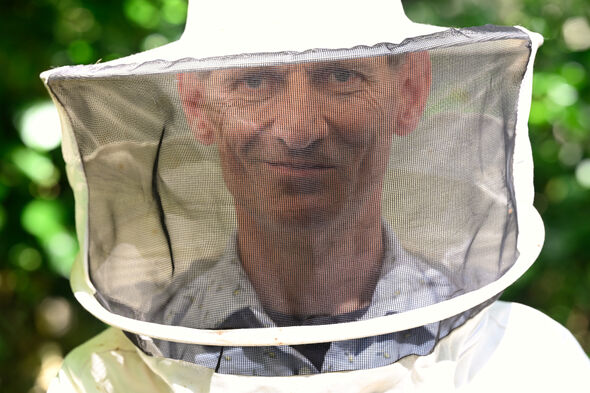
Discussion